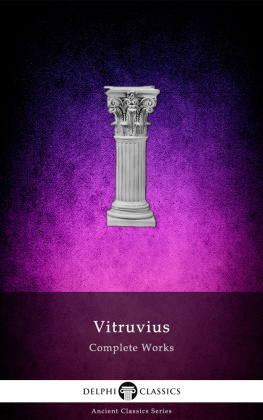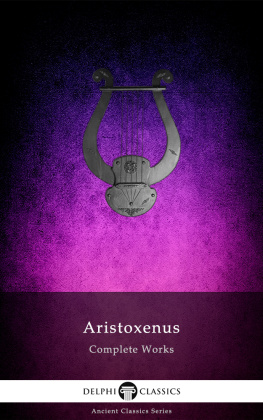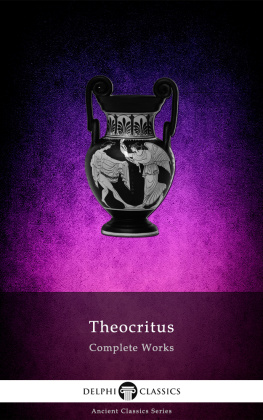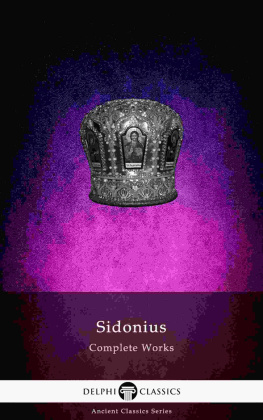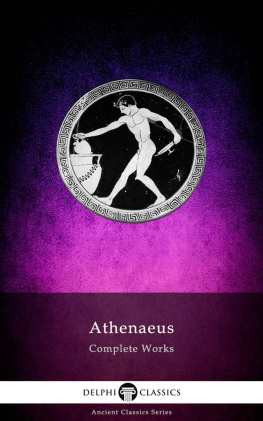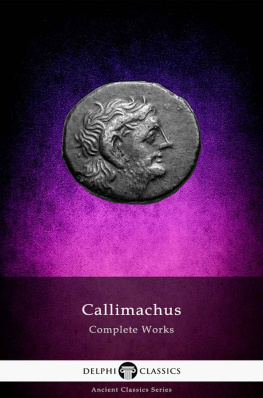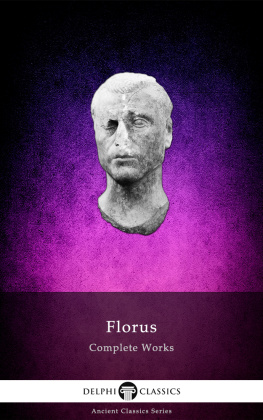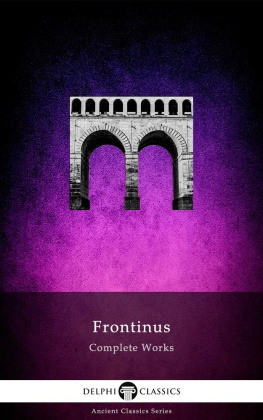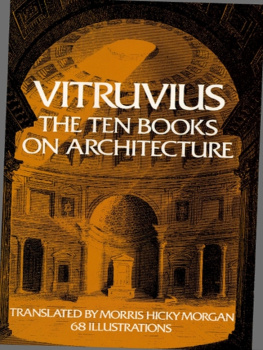
The Complete Works of
VITRUVIUS
(c. 80 - c. 15 BC)

Contents

Delphi Classics 2019
Version 1

Browse Ancient Classics







The Complete Works of
MARCUS VITRUVIUS POLLIO

By Delphi Classics, 2019
COPYRIGHT
Complete Works of Vitruvius
First published in the United Kingdom in 2019 by Delphi Classics.
Delphi Classics, 2019.
All rights reserved. No part of this publication may be reproduced, stored in a retrieval system, or transmitted, in any form or by any means, without the prior permission in writing of the publisher, nor be otherwise circulated in any form other than that in which it is published.
ISBN: 978 1 78877 973 9
Delphi Classics
is an imprint of
Delphi Publishing Ltd
Hastings, East Sussex
United Kingdom
Contact: sales@delphiclassics.com

www.delphiclassics.com
The Translation

The ancient forum at Rome Vitruvius birthplace is unknown
On Architecture

Translated by Morris Hicky Morgan, Oxford University Press, 1914
Vitruvius was a first century BC Roman architect and engineer, who studied Greek philosophy and science and gained experience in the course of his professional work. Appointed to be an overseer of imperial artillery and military engines, he was architect of at least one unit of buildings for Augustus in the reconstruction of Rome. Later on in life, when suffering ill health, he completed De Architectura . After its rediscovery in the fifteenth century, the treatise would become a seminal work on its subject, being influential enough to be studied by architects from the early Renaissance to recent times.
Formed of ten books as a guide for building projects, De Architectura is dedicated to Vitruvius patron, the first emperor of the Roman Empire, Augustus. As the only treatise on architecture to survive from antiquity, it is widely regarded as the first book on architectural theory, as well as a major source on the canon of classical architecture. The treatise contains a variety of information on Greek and Roman buildings, as well as prescriptions for the planning and design of military camps, cities and structures both large (aqueducts, buildings, baths, harbours) and small (machines, measuring devices, instruments).
Probably written between 30 and 15 BC, the extant text combines the knowledge and views of many antique writers, both Greek and Roman, not only on architecture but on the arts, natural history and building technology. Throughout the text, Vitruvius cites many authorities, often praising Greek architects for their development of temple building and the three principal orders, Doric, Ionic and Corinthian. Vitruvius also provides key accounts of the origins of building in the primitive hut. In the first book, Vitruvius goes on to give advice on the preferred qualifications of an architect and on types of architectural drawing.
The ten books are organised as follows:
- Town planning, architecture or civil engineering in general, and the qualifications required of an architect or the civil engineer
- Building materials
- Temples and the orders of architecture
- continuation of book III
- Civil buildings
- Domestic buildings
- Pavements and decorative plasterwork
- Water supplies and aqueducts
- Sciences influencing architecture geometry, measurement, astronomy, sundial
- Use and construction of machines Roman siege engines, water mills, drainage machines, Roman technology, hoisting, pneumatics
Vitruvius text covers a diverse range of subjects that he deems as concerning the topic of architecture, although this includes many aspects that may appear unrelated to a modern audience, with examples ranging from mathematics to astronomy, and meteorology to medicine. In the Roman conception, architecture took into account everything regarding the physical and intellectual life of man and his surroundings.
Therefore, Vitruvius deals with many theoretical issues concerning architecture. For instance, in Book II, he advises architects working with bricks to familiarise themselves with pre-Socratic theories of matter in order to understand how their materials will behave. Elsewhere, Book IX relates the abstract geometry of Plato to the everyday work of the surveyor. Astrology is cited for its insights into the organisation of human life, whilst astronomy is required for the understanding of sundials. In Book III, Vitruvius also studies human proportions and his arguments were later eternalised in the drawing by Leonardo da Vinci, Homo Vitruvianus (Vitruvian Man).
Vitruvius also explores the ethos of architecture, declaring that quality depends on the social relevance of the artists work, not on the form or skill of the work itself. Perhaps the most famous declaration from De architectura is one still quoted by architects: Well building hath three conditions: firmness, commodity and delight. This quotation is drawn from Sir Henry Wottons 1624 translation of the text. A modern interpretation of Wottons Tudor English might render it: The ideal building has three elements; it is sturdy, useful and beautiful.

Manuscript of Vitruvius on a parchment dating from c. 1390

Augustus of Prima Porta, first century the first Emperor of the Roman Empire is believed to be Vitruvius patron.
Next page
